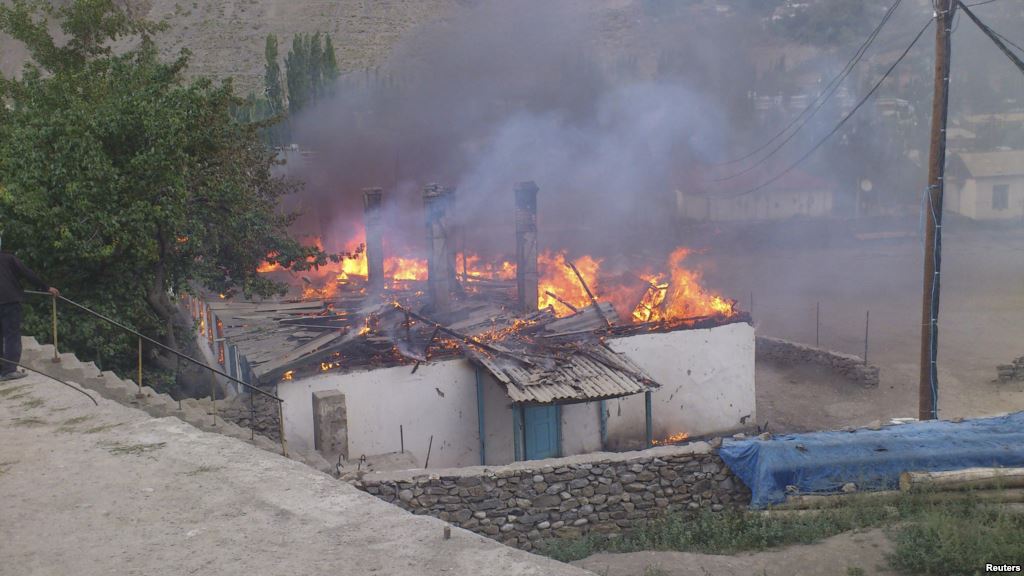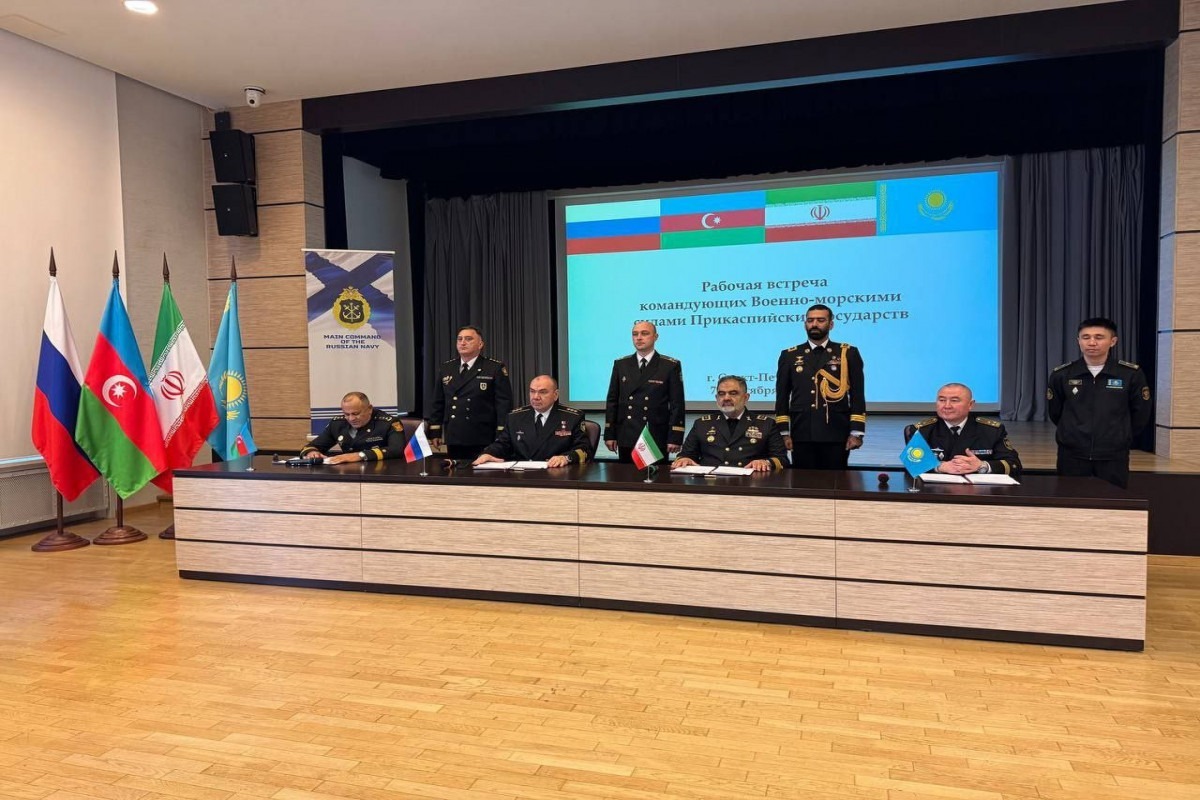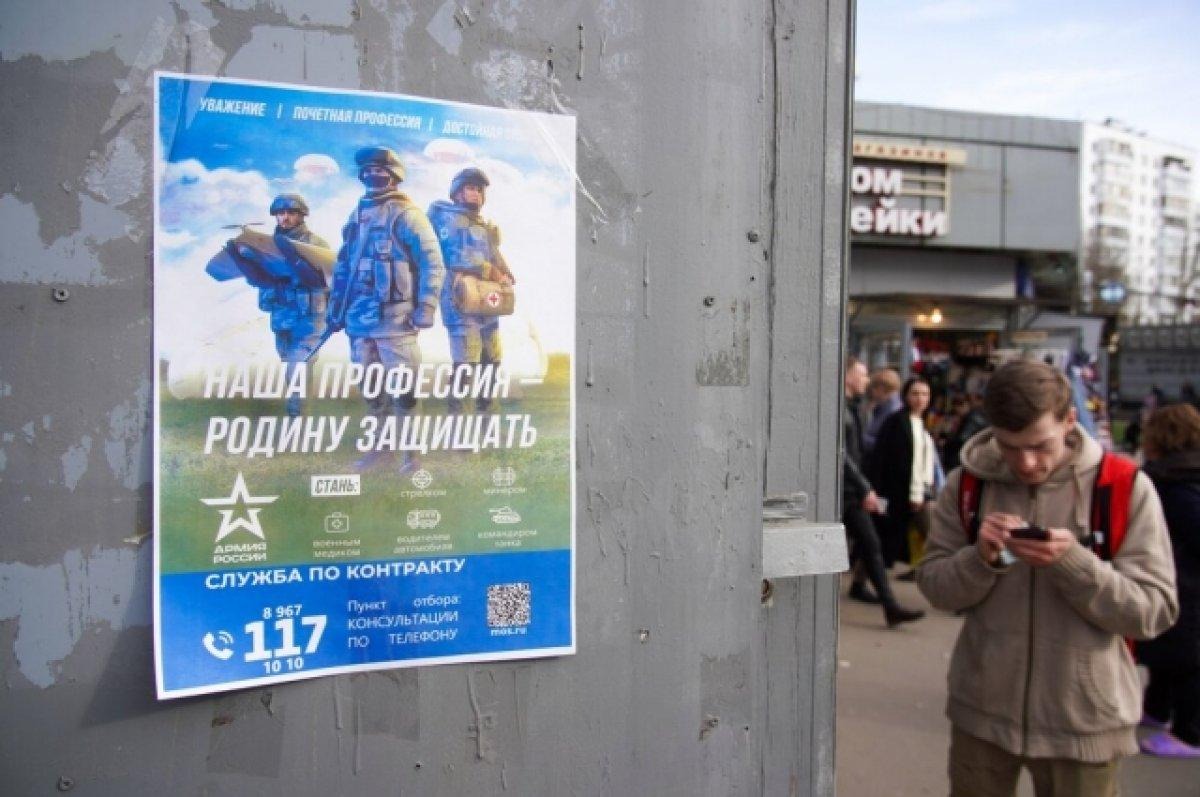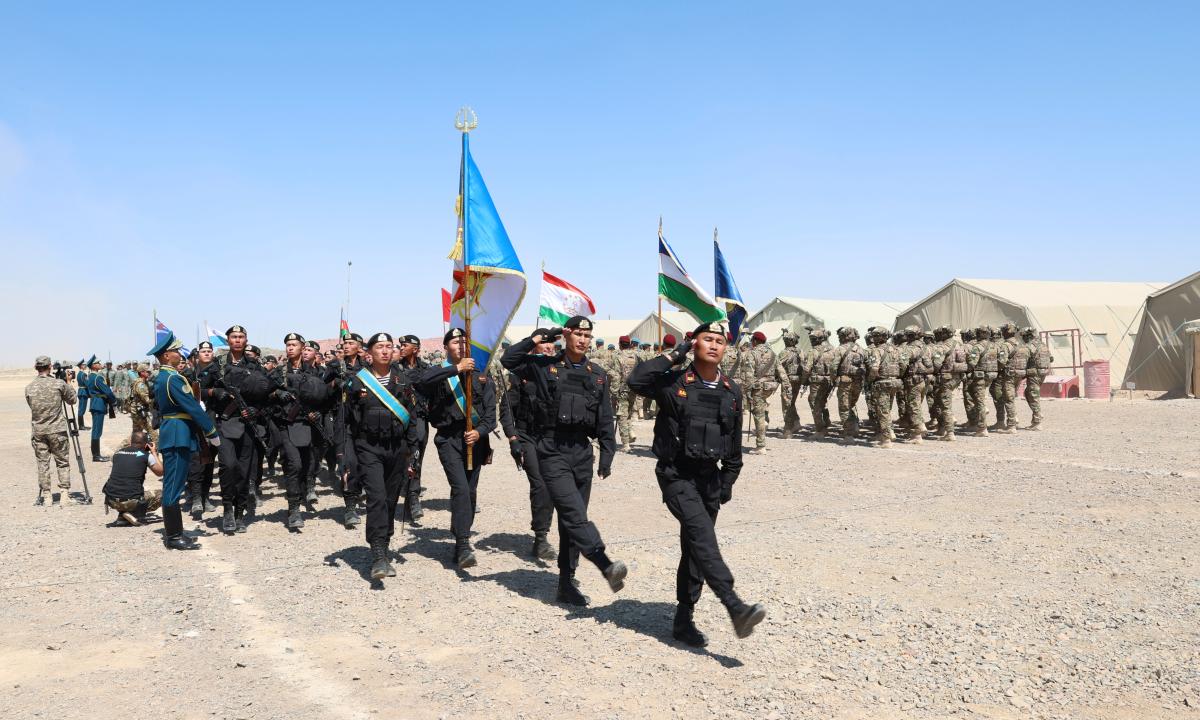
Are There Possible Future ‘Crimeas’ in Central Asia?
Are There Possible Future ‘Crimeas’ in Central Asia?
On May 21, two people were killed by law enforcement officers in Tajikistan’s eastern city of Khorog (the capital of the Gorno-Badakhshan Autonomous Province, located in the eastern half of Tajikistan, in the Pamir Mountains region). The police opened fire on a crowd that had tried to storm a police station to free a local resident who had been detained as a drug-smuggler. This man is also the brother of a former warlord and a leader of local drug mafia. Three people were taken to the hospital with gunshot wounds, of which two later died. During the clashes, a group of around 50 or 60 protesters set fire to the city court, the police station and the local prosecutor’s office (fergananews.com, May 21).
Military conflicts have become almost routine in Tajikistan’s remote Pamir region (a previous armed clash occurred there in December 2013), and all these conflicts are connected with drug smuggling from Afghanistan. In the summer of 2012, Tajikistan’s government launched a military operation against an illegal armed group led by border police commander Tolib Ayombekov, a former Islamist rebel whom authorities have accused of drug smuggling and brutal crimes. According to Dushanbe, 12 government personnel were killed and 23 injured. Moreover, government forces detained 40 rebels, including 8 Afghan citizens, and killed 30 others. However, human right activists put the figure killed as high as around 150 people: 35–40 government soldiers, 30–40 local fighters and 50–60 civilians (Rosbalt, December 10, 2013; see EDM, July 27, 2012).
Many local experts believe that the armed violence that spread throughout the Pamir region in 2012 was actually provoked by the Kremlin as a means of political pressure on Dushanbe. Indeed, on July 25, 2012, the famous Tajikistani political scientist and journalist Hairullo Mirsaidov told Jamestown: “Now, the Kremlin and Dushanbe are discussing the future of Russian military bases in Tajikistan [they are close to striking a final deal]; and for Moscow, it is profitable to make [Tajikistan’s President] Emomali Rahmon scared” (see EDM, July 27, 2012).
In 2013, Dushanbe agreed to prolong the presence of the Russian military base in Tajikistan, but the Kremlin also wants to return Russian border patrols to Tajikistan’s border with Afghanistan. For now, however, as the Russian ambassador in Tajikistan Igor Lyakin-Frolov told the newspaper Kommersant, Dushanbe has categorically refused this possibility (Kommersant, Rosbalt, December 10, 2013)
The new violence in Pamir could make Dushanbe more compliant, particularly when considering the area’s history of pro-Russian and separatist tendencies. The Pamir region’s ethnic groups differ from Tajiks. There are several dialects of the Pamir language and almost all Pamiri people adhere to the Ismaili sect of Shia Islam. Unlike other parts of Tajikistan, Pamir joined Tsarist Russia voluntarily. And at the beginning of perestroika and glasnost (“restructuring” and “openness,” initiated by Soviet leader Mikhail Gorbachev in 1986) some political activists in Pamir even declared their wish to separate the Pamir region from the Tajik Soviet Socialist Republic (SSR) and join with the Russian Soviet Federative Socialist Republic (SRSR). Now, following Russia’s forced annexation of Ukraine’s Crimean peninsula (and the implications this has for state sovereignty in the post-Soviet space), pro-Russian moods and agitations could once more reappear in eastern Tajikistan. Flashes of this are already apparent: on May 22, demonstrators in Khorog issued a resolution that the recent clashes were the result of an ongoing conflict between the people of Gorno-Badakhshan (Pamir) and Tajikistan’s central authorities (Rosbalt, May 27).
This phenomenon is not just isolated to Tajikistan. It is worth noting that similar agitations are even more likely in Uzbekistan—even though Russian influence is thought to be much lower in this Central Asia republic than in, for example, Kazakhstan, Kyrgyzstan or Tajikistan. A key region to watch in this regard is Karakalpakstan, an autonomous republic of Uzbekistan, located in the northwest of the country. Karakalpaks number nearly 520,000 worldwide, out of which about 400,000 live in the Republic of Karakalpakstan. The culture of Karkalpaks is closer to that of Kazakhs than of ethnic Uzbeks.
Illustratively, in March 2014, a previously unknown movement, “Forward Karakalpakstan,” wrote on the Facebook page of the opposition Uzbekistani movement Birdamalik: “The people of Karakalpakstan do not agree with the foreign and domestic policies of [Uzbekistani President Islam] Karimov’s regime. Karakalpaks are eager to join Russia. By culture and language, Karakalpaks are closer to Kazakhs but will the [Kazakhstani] president support the freedom and independence of the Republic of Karakalpakstan? If we hear a good signal from the Kremlin, Karakalpakstan is ready to raise the Russian flag” (Rosbalt, March 15).
Furthermore, on April 25, a newly formed “Shyrak Information Center” (which claimed to be established this year by “activists of the Karakalpak democratic movement”) sent out a press release that Karimov’s “urgent” visit to the region on April 25 was linked to “feelings of protest in Karakalpakstan, which have grown against the backdrop of the dramatic events in Ukraine” (Shyrak Information Center, April 25).
Certainly, these recently unknown movements look like phantoms. However, the very fact that these phantoms have appeared right after the Crimean annexation seems significant. Indeed, as Marlene Laruelle and Sean Roberts, researchers at The George Washington University in Washington, DC, have noted, “The ‘frozen’ conflicts inherited from the collapse of the Soviet Union can become hot again at any moment, especially if Moscow seeks to make it happen under the pretext of protecting minorities or Russian-speaking populations. This raises questions about the future of formerly contested terrain in central Asia, such as the Uzbek enclaves in Kyrgyzstan, the mostly Russian populated north of Kazakhstan, or the towns of Samarkand and Bukhara in Uzbekistan” (Washington Post, March 7).
However, of the predictions of some political scientists about the destabilization of Kazakhstan being most likely after the Crimean events, such a scenario is unlikely under the watch of President Nursultan Nazarbaev. Indeed, the Kazakhstani leader is one of Vladimir Putin’s most reliable allies in the Commonwealth of Independent States (CIS). On May 29, presidents Putin, Nazarbaev and the Belarussian head of state Alyaksandr Lukashenka established the Eurasian Economic Union—an organization that is highly symbolic for the Russian leader. In this situation, the destabilization in Kazakhstan is simply not beneficial for the Kremlin (Rosbalt, May 30).


